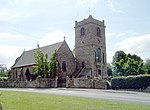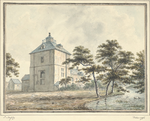Caus Castle
Castles in ShropshireHill forts in ShropshireHistory of ShropshireRuins in ShropshireTourist attractions in Shropshire

Caus Castle is a ruin of a hill fort and medieval castle in the civil parish of Westbury in the English county of Shropshire. It is situated up on the eastern foothills of the Long Mountain guarding the route from Shrewsbury, Shropshire to Montgomery, Powys, on the border between England and Wales. It was destroyed during the English Civil War and has been in ruins since.
Excerpt from the Wikipedia article Caus Castle (License: CC BY-SA 3.0, Authors, Images).Caus Castle
Geographical coordinates (GPS) Address Nearby Places Show on map
Geographical coordinates (GPS)
| Latitude | Longitude |
|---|---|
| N 52.662539 ° | E -2.976543 ° |
Address
SY5 9HA
England, United Kingdom
Open on Google Maps









